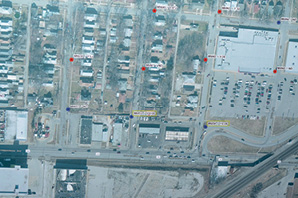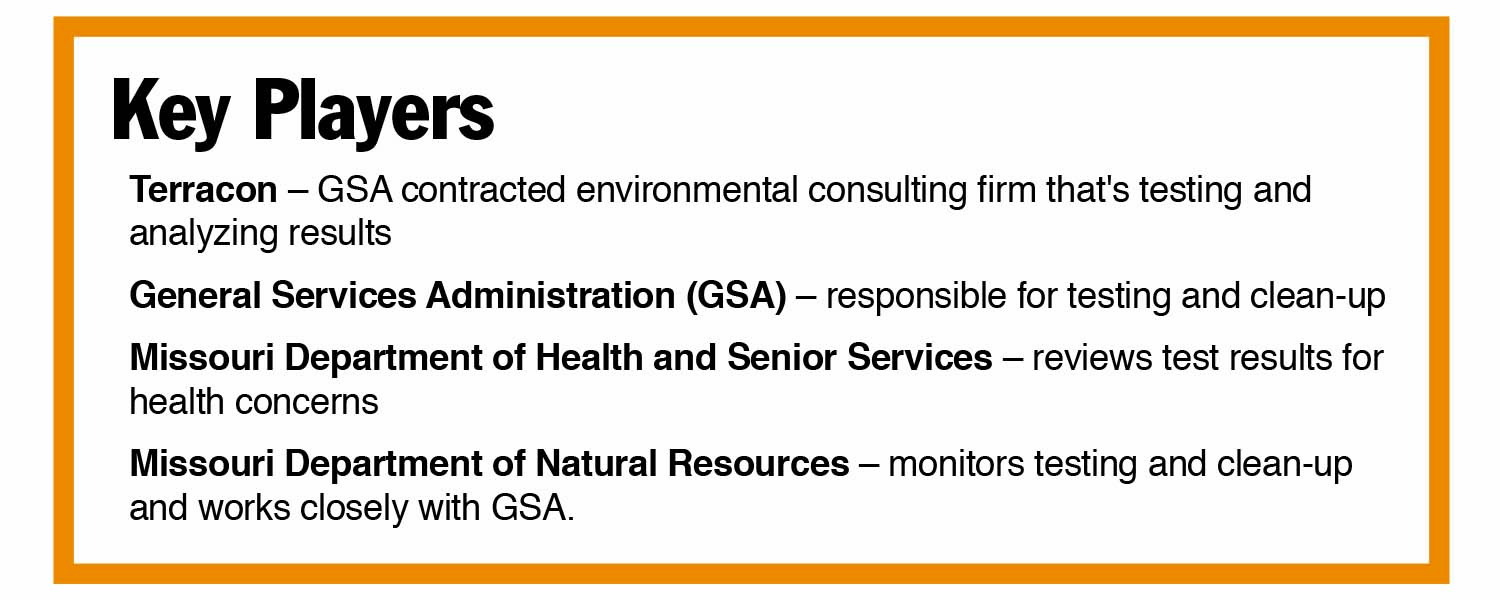
By LESLIE COLLINS
Northeast News
December 11, 2013
According to the General Services Administration (GSA), environmental contamination from the former Hardesty Federal Complex poses no immediate risk to human health.
Both state and federal government officials gathered at the North-East Public Library Dec. 10 to update residents on recent environmental testing results.
The former Hardesty Federal Complex at 607 Hardesty once served as an Army Quartermaster Depot during the 1940s and early 1950s. During WWII, the Army treated uniforms on-site with chemicals to protect against enemy gas attacks. One of the solvents used to treat the uniforms was trichloroethylene (TCE) which later leaked into the soil and groundwater. Fuel from underground storage tanks also contaminated the ground. Those tanks have since been removed.
GSA took ownership of the site in 1960, which housed a number of agencies including the Commerce Department and Environmental Protection Agency (EPA). Until 2011, the site sat vacant for more than a decade, and GSA is currently responsible for testing, monitoring and remediating the soil and groundwater contamination. In addition to testing on-site, GSA is also testing the surrounding neighborhood. To test the groundwater, GSA installed more than 65 groundwater monitoring wells and will continue to monitor those. More than 300 soil samples have been collected, said Eric Gorman, P.G., department manager of environmental services at Terracon. Terracon, based in Lenexa, Kan., is the GSA contracted company that’s in charge of testing and monitoring the contamination.
Three wells off site detected TCE contamination levels that were above the EPA standard for maximum contaminant levels. Two of the sites were located about 125 feet north of the property and the other site was located near Wilson Avenue and Belmont Boulevard.
The environmental investigation and cleanup process is a seven step process and the project is currently in Phase II, which is the feasibility study and remedial investigation phase. The remedial investigation is expected to be complete in October of 2014 and the feasibility study is expected to be complete in April of 2015. Next phases will include a detailed cleanup plan, record of decision, remedial design, cleanup of the physical site and long-term maintenance and site reuse.

















